
Looking for the third team of Milan
A journey among the lesser known realities that, for different reasons, point to the role of the third club of the city
November 12th, 2019
There are few European cities that have a thick football culture and a deep history like that of Milan, so full of pills and above all glory, thanks to the two main club that have won 10 Champions League overall, and in whose ranks they had amazing talents, World Champions and many Ballon d'Or winners.
In some of these foreign big cities, such as London, each district have always had such a precise sporting identity that led to the birth and consolidation of independent and well-structured football realities, so much that many of these later became Premier League certainties over the years. One of the reasons is certainly related to the different British sports culture and the concept of belonging, which are important for understanding the level of attachment to the team of one's own geographical district that leads to the beginning of strong rivalry between teams of neighboring districts. In the case of the English capital, it's certainly the territorial extension of the city that allowed the development of different realities that contended and alternated the team title symbol of the city. In other cities such as Paris, the current main team - Paris Saint-Germain - was born only in 1970, filling a void that was occupied only by the popular Red Star FC, from the northern suburbs of the capital. In Madrid the two most representative teams, completely different from each other, through the years have appropriated symbolic places of the city in which to celebrate their triumphs: Fuente de Cibeles for Real Madrid and Fuente de Neptuno for Atletico.
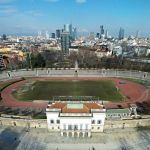
However, the tradition of the tifo in the city of Milan has developed in a different way and between the smaller teams and the reference districts there has often never been a predetermined connection. The main reason is because, especially in the first post-war period, Inter and Milan identified two opposing social classes and not different areas of the city. The AC Milan fans, for their proletarian-worker vocation, were nicknamed Casciavìt (screwdrivers), unlike the Inter Milan rivals who, belonging to the upper-middle class, were called Baùscia (boaster). This social background difference over the years has gradually decreased until it almost disappeared, but this was not enough for a third team to succeed. And in the meantime, AC Milan and Inter Milan continue to share the same stadium, the 'Giuseppe Meazza' in the San Siro area, both have established their training centers outside the city and have planned together to continue playing in the same venue in the future, after had already discussed to build a new home for both.
The strong appeal of the two clubs and the desire to make part of one or the other faction are probably the reason why in Milan there has never been too much space for another great independent footballing reality. There have been - and there are currently - ambitious attempts to want to create a real third Milan team, a team that can stand out for something special as well as for sporting results, trying to attract the likes of the city around them. Below are the most significant attempts:
F.C. Milano City

The Milano City F.C., founded in 2017 on the ashes of the Bustese Calcio, currently plays in Group B of the Fourth Division and is therefore virtually the third force of the city of Milan, because of the rankings, although it has not never played in the professionalism. The new company founded by the lawyer from Varese Stefano Amirante and actually directed by the new president Salvatore Varano have as main objective to arrive in the professional football as soon as possible, even if they started the league in a disastrous way and almost certainly will have to postpone the categories jump to the next season. The good intentions, however, stand out publicly, on the official website, which appears very fresh from a graphic point of view, starting from the team's crest and ending with the manifesto phrase that wants to summarize the characteristics of the team: 'particular signs: nice, ambitious, gorgeous'. On the club bus there is a stylized graphic of the Duomo, which was actually visible even in the match kits of the past seasons, when the technical sponsor was Macron and on the jersey there was the double badge, that of Milan City and that of Bustese. The current partner, Givova, has kept faith with the garnet color by creating interesting kits, a little too penalized by the excessive number of patches of commercial partners, also present on the back. You can notice that on the next pic, took from the official Facebook page of the club.
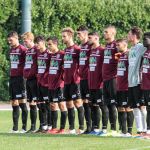
The official matches are still held at the Comunale in Busto Garolfo, a town in the Milanese northern hinterland with just over ten thousand inhabitants. But it has already been announced that from next year the team's matches will be hosted by a Milanese venue, so as to progressively complete the approach to the city. An important idea already proposed is that concerning the possible construction of a stadium in Assago, given the confidence that the project inspires in sponsors and interested companies.
Steps forward from the point of view of visibility and communication have however already been made on social accounts: even if the Twitter account has not been updated since June 2018, the Instagram page has just over 2,000 followers and the Facebook one 4,000, a non-obvious result given the category and the important results that are still to come. Certainly, however, there have been initiatives to be known, such as the presentation in the headquarters of the new company organization chart or the friendly match between the first team and Inter Milan Primavera, in what may be remembered as a future first Milan derby prototype. Another very important initiative is that concerning the affiliation of the club with the youth sectors of the Region and especially of the Province, including Lombardia Uno, an important local football sports center. The intention of the management is in fact to firstly promote young people of the area, so as to create an important identification between the project and the population.
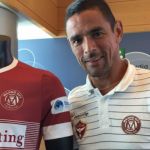
Fun fact: until last year the Lombards were led by Captain Neto Pereira, a former Varese Brazilian striker who has more than four hundred caps in pro football, and who certainly represented a credit to the category. The hope is that the technical void left by his farewell at the end of the championship can be filled quickly, given the emergency situation in which his former teammates actually are.
Brera F.C.
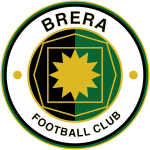
Born in 2000, this team virtually pays homage to only one of the most historic districts of Milan, Brera, although there is no link between it and the club. In fact, when the Brera was founded almost twenty years ago by the then journalist and editor Alessandro Aleotti taking the title from Atletico Milan, there was no particular intention to represent a single neighborhood, but the entire city. The name therefore only meant to indicate the area where the home games were played, the legendary Arena Civica entitled to Gianni Brera and already used, first by Inter Milan and then by AC Milan, from 1930 to 1945. The Neroverde team has recently moved to the new 'Brera Football Village' of Peschiera Borromeo, really close from Linate airport, the location opened in September 2019 where both the match ground and the training center are located.
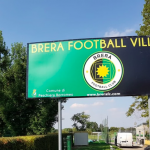
The Brera F.C. currently is in the Group L of the 7th Division, has a junior squad, a legends one, an eSports one and also a female team, an experiment born in 2018 destined to develop more seriously in the future. In the past the team even managed to play in 4th Division and to hire a famous manager like Walter Zenga, at the beginning of his career, and also the former AS Roma centre back Amedeo Mangone.

Over the years the club was able to get talked about through extra football projects, from those for the refugees' integration, those that have promoted the passion of the Rom ethnicity for the game of football, or even the Free Opera project concerning the people of the famous Milanese jail. Other initiatives are surely remembered for their extravagance, such as the one dating back to the 2013/2014 season and defined as 'Never a training, only the talent', according to which they played the entire sports season without training, or the one that involved the former defender Andrea Vasa, literally locked up in the Bikkembergs flagship store in centre of Milan. As stated by President Aleotti, author of the book that tells the stories and ideas of the third Milan team and that can be found in the 'shop' section of the official website:
"We want to be 'the third Milan team', not through the category, but thanks to the cultural, social and sporting projects that give life to the Brera Football Club".
A.S.D. Alcione
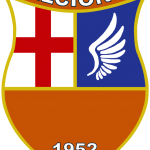
It's the team that gave the sporting birth to Giuseppe Dossena, former Torino and Sampdoria, with some caps in the Italian National team during the 80s, but also to Andrea Caracciolo, the Airone who make history at Brescia and is currently playing with Feralpisalò, and the former Inter Milan and Everton Alessandro Pistone. The history of the Alcione began in 1952 with the foundation of the club based in Milan, and then continued over the years until today, during which time followed one another men like Ernesto Pellegrini, future president of Inter Milan and Carlo Tognoli, who later became mayor of Milan. This has done nothing but increase the prestige of the orange club, which unfortunately has never managed to overcome the barriers of amateur football throughout its history and still today is playing in Eccellenza, the Italian 5th division.
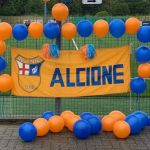
Also in this case, obviously, the main vision is to become the third Milan team, and from this point of view, a prestigious award has actually already taken place: in 2015 Sinisa Mihajlovic's AC Milan chooses to start its season with a friendly match against Alcione, who give up 5-1 because of goals from de Jong, Poli, Cerci and Niang (brace). A boast, that of having challenged Milan even if on such an occasion, which has perhaps contributed to making envy grow among all the aspirants to the role of 'third team of Milan'.
Probably Alcione is known for its particular tradition linked to the youth sector, which has been systematically at the top of regional non-professional competitions for about twenty years. Thanks to youth football, the hub of the entire football project, which the Milanese team is able to sustain economically, thanks to the sales of very young talents heading towards professional football. Thanks to the technical development of the kids of the pre-competitive age group, as strongly requested by the management, the scouting system of the main national football realities has become increasingly aware of Alcione, which has become an institution for this type of operations. All of this, of course, without any kind of tactical exasperation in training methodologies, just as the technical staff of the youth sector keeps on specifying, following rather the growth of talents and discipline.
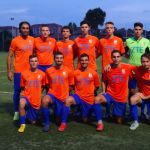
On Instagram there is an official profile with more than 1k followers dedicated both to the youth sector and to the first team, well managed for from a graphic point of view. The Joma fluo orange home kit is a touch of style, as it's very reminiscent of the Holland jersey, also considering the blue font and inserts.
Bonus
A.S. Velasca
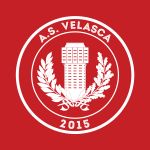
In an old interview published in our magazine in 2017, a Velasca fan and collector had defined "a two-dimensional project, an artistic one and another sporting one. A project that walks on two legs, two aspects on paper in antithesis but which instead they are the same thing even if the sporting dimension is expressed more in the field, while the artistic dimension lives on extemporaneousness and visions that contribute to our visual identity". More than a real soccer team, it's in fact a unique project that combines creativity and passion for art with a completely unique vision of football, born in 2015 in Milan by a group of dreamers and artists of various kinds (Marco De Girolamo, Karim Khideur, Loris Mandelli, Wolfgang Natlacen and Clément Tournus). Over the years the Velasca, whose name is a clear homage to one of the symbolic buildings of Milan, the Velasca Tower which appears in the social logo and which represents a bit of a virtual bridge between the past and future of the city that is precisely what that would like to constitute the newborn team.
That over the years has managed to talk about itself more for its original ideas than for the sporting results, given that at the moment they are in the amateur leagues, only in Terza Categoria: over all that of the unique presentations, to which we have had the pleasure of being invited (on the tram around Milan in 2018, on tour to see Milan's iconic buildings in 2019, to give a couple of examples), but also the choice to wear absolutely unique shirts, real works of art recently produced by Le Coq Sportif, using unusual graphics and fonts and also imaginatively customizing usually anonymous objects such as cards, corner flags and captain's bands. If there is a reason why the team manages to represent the city of Milan it's also for its International soul, given the origin and identity card of some founding members (above all President Wolfgang Natlacen, Italian-French) and many friends and supporters of the club, including some former footballers such as Ibrahim Ba and Vikash Dhorasoo. Confirming the strong bond with France, the team also has a branch in Paris, while playing home matches at Campo Triestina, in the San Siro area. Recently the first intercontinental friendly took place, in South Africa against Soweto Stars FC, a local team with which the Velasca is twinned and which will soon host in Italy.








































.png)


.jpg)
































